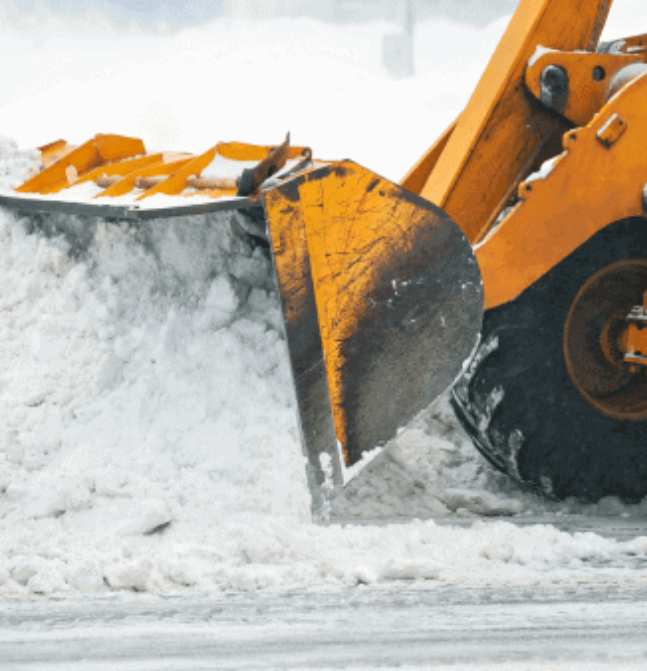When you call, we answer – day or night. New England winters are notoriously unpredictable and can be especially tough on property owners and facility managers juggling multiple locations for snow and ice removal services. When you partner with G. McNeill & Son, you can rest easy knowing that our team of snow pros have you covered.

Our commercial snow removal & management division provides around-the-clock service so employees, customers, residents & suppliers arrive safe and sound. Parking areas, access roads, walkways & entrances get immediate and constant attention throughout any winter event.
Many properties require snow to be hauled on-site to a snow storage location while others require snow to be removed from the site to maintain both safety & adequate parking. Depending on the property style, we can relocate or haul snow during an event or after to meet your properties needs.
We have over 50 years of experience plowing snow for corporate, healthcare, malls, industrial, sports complexes, and HOAs in New England.
Complete property assessment for complications and risk factors. Document hazards. Constant monitoring before, during, and after winter events. Photographs and mapping during inspections. Snow placement planning.
We mitigate the possibility of roof weakening, leaking, and possibly collapsing under the weight of snow. Flat and low-slope roofs are particularly at risk. We remove ice dams if they develop.
We offer our services with several types of contracts like Seasonal, Time & Materials, Per-Inch of Snow, Hourly Rate, and Custom. Each contract comes with the peace of mind of knowing that we use the most up-to-date equipment to allow us to remove your snow and ice in the shortest amount of time possible
For tight or delicate areas that require more detail, our snow removal team will put boots on the ground for jobs that require it.
Accidents involving slips and falls can increase property owners’ insurance premiums and create legal issues for the property owner. We leverage 50+ years of experience to mitigate this possibility.
Melting snow rather than displacing it can reduce the cost of snow removal by 30 to 40 percent. It’s ideal for spaces where large pileups of snow would be cumbersome or even dangerous.
We’re a proud member of the Snow & Ice Management Association (SIMA) and Accredited Snow Contractors Association (ASCA).